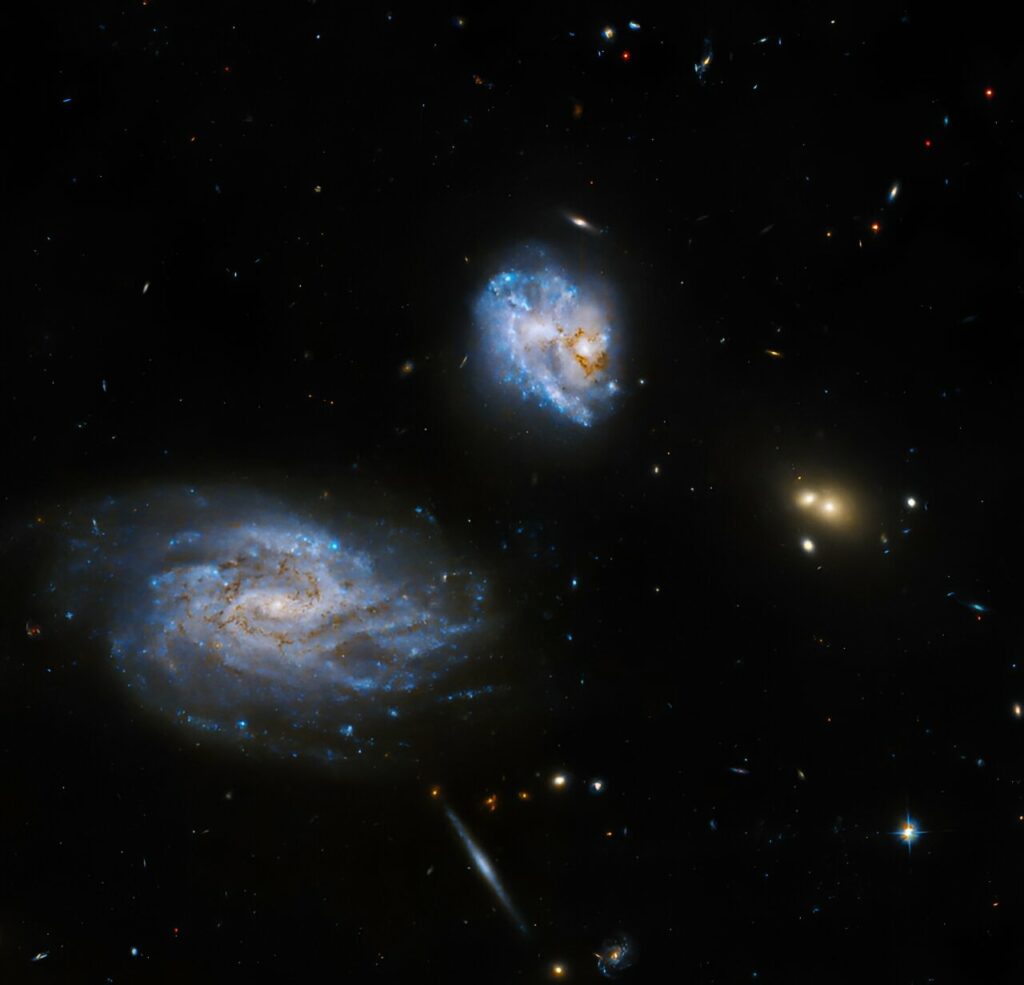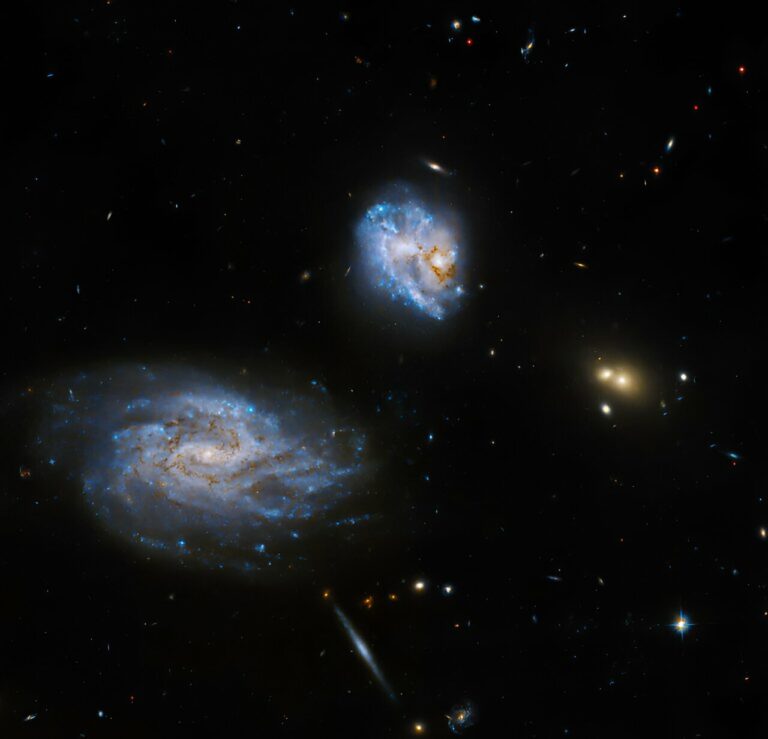Hubble Observes a Tilted Galaxy Encouraging Star Formation in its Companion.
The Arp 300 system is composed of two galaxies, UGC 05028 and UGC 05029. UGC 05028, the smaller spiral galaxy, displays an irregular structure, likely caused by its gravitational interaction with UGC 05029. This irregularity is more evident in the new image captured by NASA’s Hubble Space Telescope, as opposed to ground-based telescopes.
A bright knot located southeast of the center of UGC 05028 could potentially be the remains of another small galaxy merging with it. If this is the case, the remnants will eventually merge with the bar of stars observed in Hubble images, resulting in a central bulge similar to that of UGC 05029, the larger companion galaxy of Arp 300.

UGC 05029 exhibits a prominent spiral structure and showcases multiple hot, blue giant stars on the side facing UGC 05028. This increased star formation is likely a result of the interaction between the two galaxies. Additionally, there is another spiral galaxy visible below UGC 05029, albeit too faint to distinguish star-forming regions. The five objects positioned above it are likely a cluster of distant background galaxies.
Hubble’s observation of this galaxy pair aims to investigate the correlation between the overall physical characteristics of galaxies and their star formation.
This article is republished from PhysORG under a Creative Commons license. Read the original article.
Do not forget to share your opinion with us to provide you with the best posts !




0 Comments